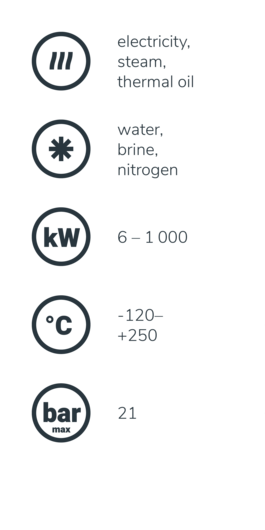The reactor temperature control with monofluid systems significantly developed by HTT more than 30 years ago and which has become a standard process control in the chemical and pharmaceutical sector, has now been enhanced to work for even lower temperatures.
Ever higher purities are demanded in today's chemical and pharmaceutical production. For this purpose, the reaction temperatures are reduced more and more. So, for example, the production of certain organometallic compounds is only possible at reactor temperature ranging from -60 °C to -100 °C. |
A further development of established heating-cooling-freezing systems (so-called monofluid systems) is suited for reactor cooling at temperatures of -80°C to -120°C. These indicate normally
-
a steam pressured heat exchanger or electrical heater for the high temperature range,
-
a heat exchanger which is flushed with cooling water for the medium temperature range as well as a
-
brine cooled heat exchanger for the low temperature range. In addition for this or as replacement, the lowest temperatures for enhanced hkt-systems are reached with a heat exchanger cooled with liquid nitrogen (LN2, evaporation temperature at ambient pressure -196 °C). A simplified system schematic of such a plant is shown in the following image.
-
Temperature range between -120 °C and +250 °C
-
Performance range: 6 to 1,000 kW
-
Primary energies heating: Electro/steam/thermal oil
-
Primary energies cooling: Water/brine/nitrogen
|
 |
|